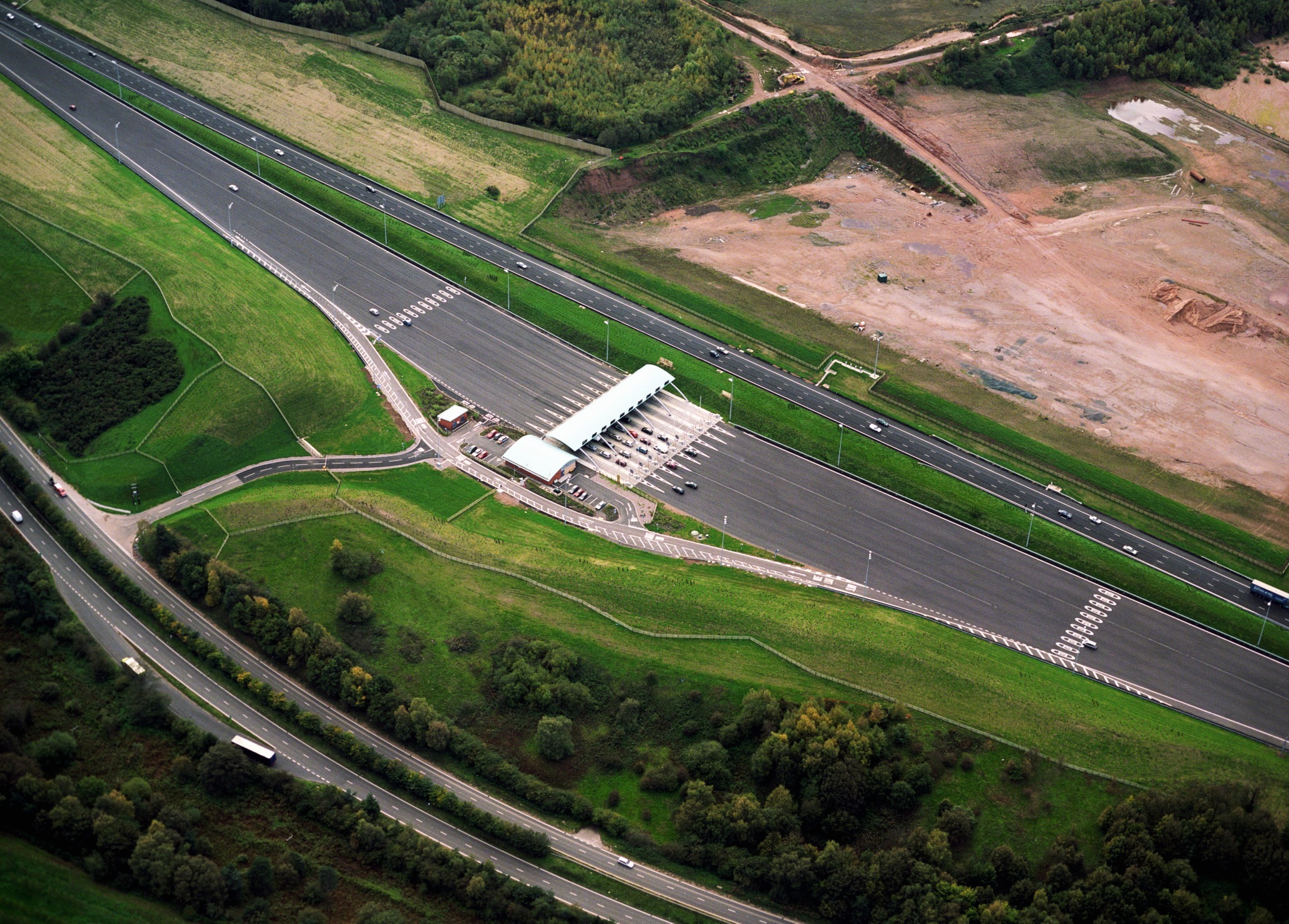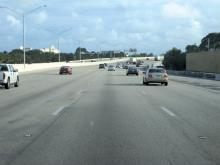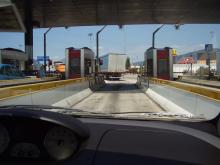
Is there any way out of future user-pay funding for England’s highway infrastructure?
The answer is a resounding ‘no’, according to the recently published report: Funding Roads for the Future. The brief 25-page document by the London-based Association for Consultancy and Engineering, ACE**, sums up the state of England’s roads. It calls for a radical rethink about how to pay for - and who pays for - England’s roads, especially local roads.
The results were presented to a small audience on the 16th floor of
But there is little glitter when it comes to funding England’s roads, according to the report. Unless the private sector is brought into play as a direct investor and operator of highways, England’s roads will be starved of money for essential maintenance and expansion. A more sustainable and, in the eyes of the report’s authors, more equitable funding mechanism is required sooner rather than later.
It should be noted that the report covers the highway network in England only. Responsibility for roads in Scotland, Wales and Northern Ireland has been devolved to the respective national legislatures. The UK government in London is responsible for funding roads in England, which is the focus of ACE’s report.
With the exception of bridges, England is a nation of toll-free roads, barring one short - 43km - six-lane motorway. The privately-owned M6Toll around the city of Birmingham opened in 2002.
The UK government estimates that traffic on England’s roads could increase by up to 55% by 2040. Many European countries are grappling with similar problems of increasing congestion, air pollution, adequate maintenance funding and how to adapt to new driving technologies such as electric and autonomous vehicles as well as truck platooning.
“From an infrastructure advisory position, we are approaching a critical point, a tipping point, where we cannot rely on the public purse to fund ongoing maintenance,” Dave Beddell, managing director of strategic highways Europe at global US engineering firm AECOM, told World Highways.
“There has to be a private finance solution. The challenge that both government and industry has is to make that investment an attractive proposition for potential investors,” says Beddell, who is also chairman of ACE’s road sector interest group which produced the report.
The issues are perhaps felt most acutely in England where the population density is among the highest in the world. This is less so in Scotland, Wales and Northern Ireland. But local roads anywhere aren’t a sexy subject, explains Beddell. “Local roads have suffered from decades of neglect and we are now beginning to see the result of this on what is a mature infrastructure. We applaud the funding going into the main national strategic road network, but it is only part of the users’ journey. We need to take a holistic view of what investment is needed.”
The UK government has already taken steps to ensure proper maintenance of England’s trunk roads – motorways and A-class highways. It launched the Road Investment Strategy 1 in late 2014 and in April 2015 created the stand-alone government-owned company
Highways contractors applauded the strategy and five-year financial commitment. Previously it was a year-to-year commitment which meant businesses suffered great uncertainty about what contracts, if any, were coming down the line. Also, the
The government is now looking at Road Investment Strategy 2 up to 2025. The ACE report sees all this as “positive”. Still, the issue remains – funding must come from somewhere.
Funding for local roads is particularly precarious, according to the report. While these roads represent 98% of the network by kilometres and carry two-thirds of traffic, the tight budgets of local authorities mean local roads often miss out on investment. Also, the UK government acknowledges that congestion will be a major issue, likely to increase 63% by 2030. At the same time, revenue from taxes related to roads is drying up.
London’s Congestion Charge and T-Charge
Introduced in 2003, the London Congestion Charge is reportedly one of the largest such zones in the world, but a plan to extend it westward has been dropped. In 2013 the Ultra-Low Emission Discount introduced more tougher emissions standards that limit free access to the congestion charge zone to all-electric cars, some plug-in hybrids and any vehicle that emits 75g/km or less of CO2 and meets the Euro 5 standards for air quality. A toxicity charge, also known as the T-charge - was introduced last October. Older and more polluting cars and vans that do not meet Euro 4 standards have to pay extra on top of the congestion charge to drive in central London. The charge typically applies to diesel and petrol vehicles registered before 2006.
The report suggests an obligatory Local Infrastructure Tariff to replace the discretionary Community Infrastructure Levy, CIL, which all local authorities have the power to pursue with land developers. The CIL can be levied against a developer planning to introduce new housing or commercial buildings, for example. An arithmetical formula dictates what a developer must pay towards infrastructure costs that will serve the new development.
But, as the report notes, there are a number of exemptions in the enabling regulations. As of late 2016, there were 130 local authorities (31% of the total) charging the levy with a further 88 (21%) working towards adopting a CIL. Some analysts estimate that the CIL is yielding only 5-20% of the funding required for related infrastructure development.
Generally, the growing number of low- and zero-emission vehicles means revenue from the national Vehicle Excise Duty (VED) and Fuel Duty will continue to decline. VED is a tax on the ownership of a vehicle based on CO2 emissions. A car with no CO2 emissions has no VED costs, whereas a car emitting over 255 grams of CO2/km costs €2,260 (£2,000) in the first year and nearly €160 (£140) in following years.
While revenue from VED is expected to rise slightly over the next five years from nearly €6.9 billion (£6 billion) in 2017-18 to almost €7.8 billion (£6.8 billion) in 2022-23, the current structure of VED and the inevitable uptake of zero-emission vehicles will see revenue from VED decline.
The government’s ban on the sale of new petrol and diesel vehicles from 2040 and industry expectations of a switch-over to electric vehicles by the mid-2020s means VED will dwindle further.
The report, instead, urges VED be phased in for zero-emission vehicles over the next decade as it increasingly competes with petrol and diesel vehicles on price. This option should ensure that VED revenue grows at, or above, inflation beyond 2040 when the sale of new petrol and diesel vehicles are banned.
No barrier to lorry charging
The UK’s Intelligent Transport Society (
However, there could be concerns about privacy issues concerning data collected by intelligent transport systems, noted the ITS UK in response to a consultation on reforming the heavy goods vehicle (HGV) road user levy.
“The experts have advised on privacy issues surrounding any use of location‐based charging and although it was agreed that this is less of an issue for freight carriers than it would be for private drivers, there still needs to be mechanisms in place to allay any fears.”
Technology needed already exists, with Germany having a successful truck tolling scheme since 2005. Options for technology range from automatic number plate recognition (ANPR) or toll tags to a solution based on an onboard tolling unit or the use of a GPS-enabled dongle plugged into the vehicle’s onboard diagnostic port.
“When I was transport minister in the 1990s it was easy for road user charging to be kicked into the long grass because the infrastructure costs were prohibitive,” said Steven Norris, ITS UK’s president. “There is now no such excuse and any decision is purely a political one.”
ITS UK is a not-for-profit public and private sector association for the promotion of intelligent transport systems representing around 150 UK organisations. Members include government departments, local authorities, consultants and contractors, manufacturing and service companies as well as academic and research institutions.
Consider the government’s move to a road user levy for HGVs, or heavy goods vehicles, meaning trucks. It was frozen at just over €11.50 (£10) per day or €1,145 (£1,000) a year and had raised around €53.2 million (£46.5 million) from foreign-registered HGVs by 2015. But UK-registered owners of HGVs can offset their levy with what they spend on VED, which whittles down the money for roads.
The report suggests that the UK government charge foreign registered HGVs a higher road user levy or reduce the VED costs for UK-registered HGVs. And there would be no offsetting against VED for UK HGV owners.
However, the report points to the need for some form of “dynamic road user charging” for HGVs which will also act as a pilot for a general road user charge.
For HGVs, technologies such as improved vehicle tracking can help introduce a dynamic charging levy based on per-distance costs. This could vary based on the vehicle’s location, time of day, congestion on the network, CO2 emissions and the size of the vehicle.
“Using the HGV road user levy as a pilot for the introduction of broader dynamic road user charging across the road network allows the government to address any teething issues prior to a full rollout,” notes the report.
It notes that there are a range of new technologies that allow road agencies and operators to tax vehicles in a smarter way, as seen with the introduction of London’s Congestion Charge and T-Charge (see box).
However, the report goes on: “The real challenge will be replacing Fuel Duty with a viable and long-term revenue source,” the report continues. “The government must prepare for a post-Fuel Duty world now, and the clear answer is the introduction of dynamic road user charging.”
Road Investment Strategy - RS1 - between 2015-2020
Around €17.4 billion (£15.2 billion) to be invested in over 100 major schemes. This includes 84 totally new schemes, of which 69 will enter construction by 2020-21. Of the €17.4 billion, nearly €4 billion (£3.5 billion) will be for 20 new schemes to improve some of the most notorious road sections.
Around €4.3 billion (£3.7 billion) will be for 64 new schemes to improve safety, ease congestion and local economies. An additional €1.03 billion (£900 million) will be ring-fenced funds for key local challenges such the environment and air quality as well as cycling safety and integration into road schemes.
Also, “the government should look into implementing dynamic road user pricing for all vehicles in the future.” Dynamic road user pricing “could also better integrate privately-financed or funded infrastructure into the road network by collecting tolls or subsidies for investors”.
The ACE report recommends that the government conducts a study on increasing private investment in the road network and how it is done in other countries. With high upfront costs during the design and construction phase, private investments can make these projects possible and avoid a significant upfront cost on the public.
Consideration should be given to different types of public-private partnerships to unlock this spending by the private companies. However, the government “needs to create more confidence for private investors by ensuring it minimises risks and other uncertainties in road infrastructure projects”, the report concludes.
To be fair, the report also suggests that the government consider new performance metrics to tackle congestion and increase the efficient use of roads. If more private participation is forthcoming, these key performance indicators would likely fall on the shoulders of contractors operating the highways. Metrics may include time lost per vehicle per kilometre, reliability of journey, average speed of vehicles. While these may now be monitored, there are no KPI goals attached to the results.
The report does acknowledge that the concept of dynamic road user pricing “has received a mixed response from the public”, predominately because people fear being priced off the road. “The government would benefit from starting a public conversation about the merits of dynamic road user pricing and how this could work.”
Acceptance by the English public of dynamic road pricing would hinge on “user perception of customer amenity”, according to the report. In other words, value for money.
“It’s a myriad of issues,” explains Beddell. “The concept of paying-to-use is prevalent in many walks of life. What we need is a cultural shift when thinking of the road network, similar to people’s perception of using the rail network. Is the train on time? Do I get a seat? Does the refreshments trolley come through the coach? Understanding the customers' perception of value they place on the road network and how they measure amenity is the key.”
A major hurdle is managing the public's suspicion of the private sector delivering public services, be they hospital and school construction to prison and library services. That suspicion has been fuelled in the past 20 years with some spectacular failures, most recently – and relevantly – that of international contractor
The UK-based company collapsed into financial disarray leaving many public authorities scrambling to substitute providers where the company could no longer operate. Media reported that more than 75 Carillion workers on the €629 million (£550 million) Aberdeen Western Peripheral bypass in Scotland were offered jobs by its joint venture partners Galliford Try and Balford Beatty. Similar situations occurred in Canada, where Carillion companies maintain around 40,000km of highways in the provinces of Ontario and Alberta.
“I think we have seen in recent weeks a sad example of where the private sector hasn’t delivered the benefits that we hoped it would. This is the demise and collapse of Carillion, one of the sector’s largest suppliers,” says Beddell.
“But for every poor example that draws the headlines, there are huge numbers of good examples where without private finance and public-private partnerships [infrastructure]…wouldn’t occur. But, yes, I think, there is some PR work to do around the benefits of private finance in the road network. Ultimately, we’ll be judged on whether we deliver on the promise made. The conversation begins.”
In truth, that conversation by the government with the public as well as contractors about dynamic road pricing started a long time ago. Witness the introduction of the Road Investment Strategy, the formation of Highways England and the CIL. What needs to be done now is move the conversation from just that – talk – into action. However, as Beddell says, a critical point is nigh if England is not to fall inexorably behind in highway maintenance.
This critical point would be reached at a time of economic uncertainty for the UK because of Brexit – the UK leaving the European Union by 2019. Never has England, and the UK as a whole, needed greater certainty for highways funding.








